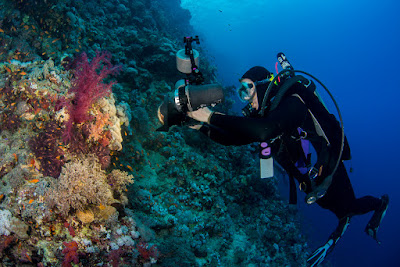
Optical Ocean Sales' Margo Cavis put the Light & Motion Sola Video Pro 8000 lights to the test and liked them. We've got a new review and test footage on our site.
"...One thing that stands out about these lights is the LED display. Light & Motion really put some thought into both the display and the controls of these lights. The LED display is bright and clear, making it so much easier to read than any other lights I have tried – no matter what the lighting conditions of your dive. Then, on top of that, the controls are simple and specific. One control is just a dial, it will turn the lights on or off. In the off position, the light is locked so the other control will not work and the light will not be accidentally switched on during travel. The second control is both a dial (lock) and slider. To make the lights brighter – slide it towards the head of the light, to make the light dimmer – slide it towards the back of the light. The slider always pops back to the center, so each bump in either direction adjusts the light by 1000 lumens. This made it much easier to get the settings I wanted – when I wanted them, unlike most video lights where you would have to cycle back around through all the settings in order to bump the brightness down a notch...." Read More





